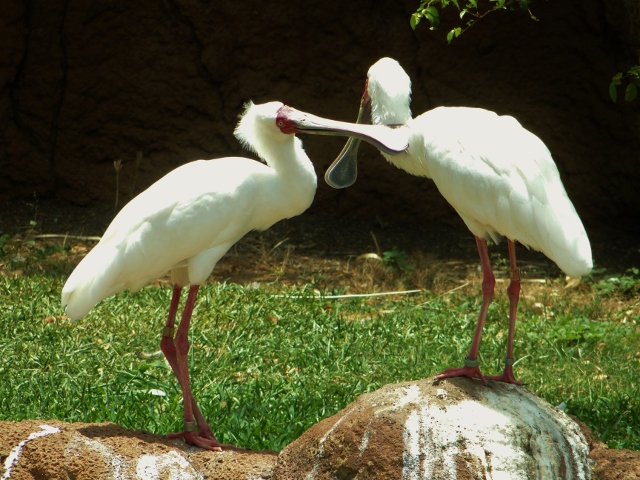"Since love grows within you, so beauty grows. For love is the beauty of the soul." - Augustine
Loving Spoonbills
Happy weekend to you ! This inspirational weekend post will be a little different as I will mostly use quotes from famous people ..... quotes about love, along with my photographs and a video about how animals can express love.
Most people were raised in a loving and demonstrative family. Count your blessings !
Meerkat Family
Lesser Flamingo Family
"The world does not understand theology or dogma, but it understands love and sympathy." - Dwight L. Moody.
"Faith makes all things possible....love makes all things easy." - Dwight L. Moody
"Do not waste time bothering whether you 'love' your neighbor; act as if you did. As soon as we do this we find one of the great secrets. When you are behaving as if you loved someone, you will presently come to love him." - C. S. Lewis
"Neighbors"
"What does love look like? It has the hands to help others. It has the feet to hasten to the poor and needy. It has eyes to see misery and want. It has the ears to hear the sighs and sorrows of men. That is what love looks like." - Augustine
"The world is not a play-ground. It is a school-room. Life is not a holiday, but an education. And the one eternal lesson for us all is how better can we love." - Henry Drummond
"The Christian does not think God will love us because we are good, but that God will make us good because He loves us." - C. S. Lewis
Below is a video (not mine) showing love between animals:
Below is a photograph (not mine) for humor:
Scripture says:
Matthew 22:37-40= Jesus said unto him, Thou shalt love the Lord thy God with all thy heart, and with all thy soul, and with all thy mind. This is the first and great commandment. And the second is like unto it, Thou shalt love thy neighbor as thyself. On these two commandments hang all the law and the prophets.


























.jpg)




.jpg)
